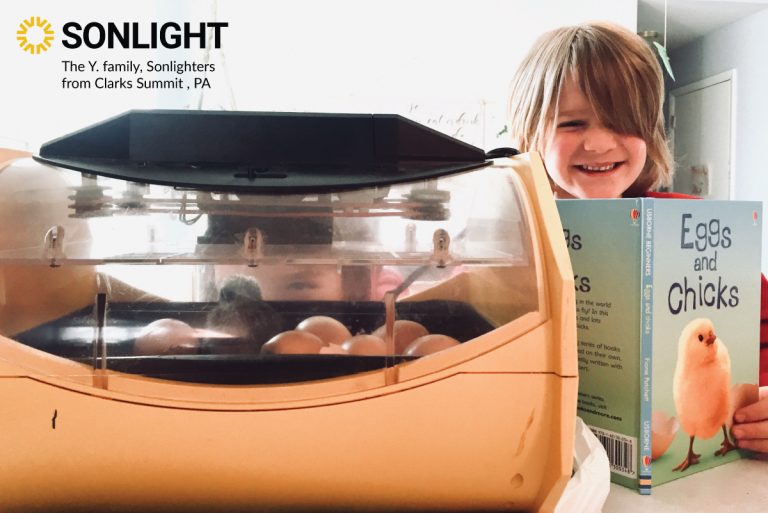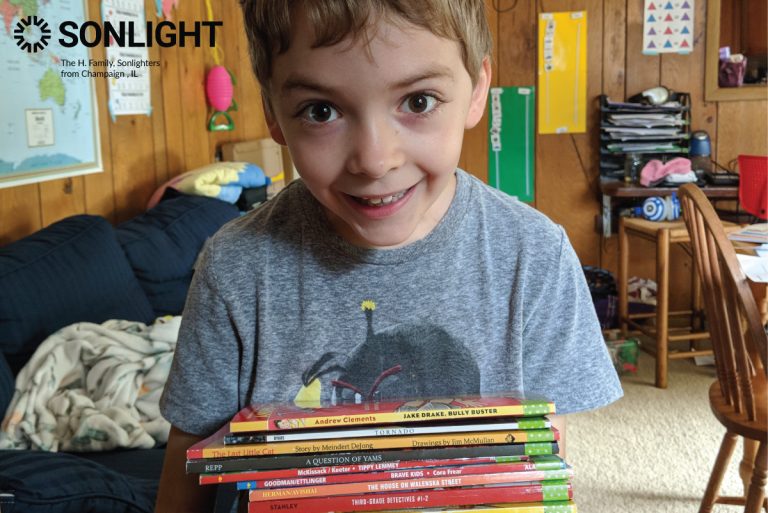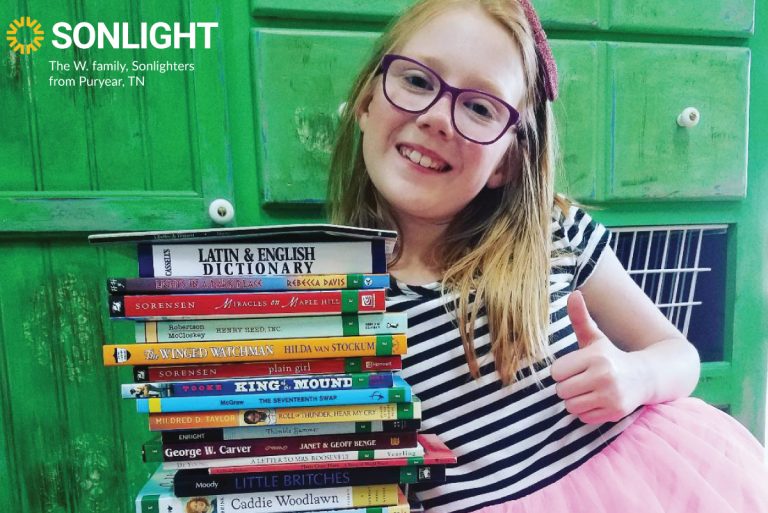
It’s a common misconception that a literature-rich, playful, self-directed education becomes obsolete once exams loom in upper grades. As I reached high school age, however, I was growing into Sonlight, rather than growing out of it. Though we made less use of the Instructor’s Guides, it was the Sonlight skill-set that got me through college entrance exams and later allowed me to flourish as an undergraduate. Here’s how Sonlight made me a book lover in high school.
Household Literature
In school, students are usually assigned books based on principles that are unknown to them. They seem to be curated simply for the sake of academic performance, or occasionally for an abstract political point.
This was not my experience as a high schooler. Books were chosen carefully by my parents to stand for the causes of our household. I knew exactly what those causes were. They wanted me to be a wise ambassador for Christ, and that’s what I saw when I saw Sonlight on our bookshelf.
Books were not primarily an assignment, they were a life I grew into. They were an invitation into adulthood.
Books Were Mine and Aided my Goals
Because I saw the purposes of my parents in the literature they curated for me, I read more and more as I adopted those purposes. I wanted to reach the world for the glory of God, and I had to understand the world in order to reach it.
As I turned fifteen, I was reading Sonlight books of my own accord, sometimes even buying them with pocket-money.
- I read the Westminster Shorter Catechism on a library computer.
- The Pilgrim’s Progress had always been on our shelves, and I finally dived into it.
- I had to find out why my mother loved Pride and Prejudice.
- God’s Smuggler was a birthday present.
I read because I believed the books I was reading. I wanted the adventure that my parents saw in these books.
Magical Books
It’s hard to read books when they don’t have a rhythm. Even great non-fiction has a sense of poetry to it. Grammar itself is an attempt to share a system that breaks information into predictable yet progressive parts, not unlike poetry. I was able to read fast and accurately because I had a sense of this rhythm that had developed from the earliest moments.
My mother read to me endlessly: poetry, stories that ran beautifully, and non-fiction that was crafted with love. I became good at hearing the magic in sentences, not just the facts contained there. It meant that I could be carried along in that magical flow rather than toil over decoding. Reading was enjoyable because I had heard so much of it.
Literature Crosses Disciplines
One of the reasons people think a literature-rich education is all but useless for STEM oriented pupils, is that literature is considered a subject. In this misconception, English Literature is a course with its own rules and norms which are not applicable to other subjects.
The truth is that literature is a window into all other subjects.
Math, you’ve heard it said, is a language with which to speak about all of life. But math does not consistently light up a love for other routes to understanding all of life. Generally speaking, math leads to more math.But reading is a portal to the joy of mathematics, of engineering, or of politics.
That’s why I kept reading after my focus was not in English Literature. It’s also why I choose Sonlight for my budding engineer of a son. Great literature is the crossroads at which meaningful learning pathways are seen and chosen.
Practical Tips for Making Life-long Readers
- Find ways to slow down. Reading is pleasurable but slow. It’s very hard to switch from a life of hustle-bustle, screen-based entertainment to the gentle magic of a novel. It may be worth cutting screen time to change the mental frequency in your household.
- Read your own books in front of them. If you don’t read, why would they? High schoolers are discovering what it means to be an adult, and you're a model.
- Allow some light reading along with more demanding living books. Man cannot live on cake alone, but life is rather dull without it. It’s the same with easy-reading.
- Find book-lovers. Reading is social, but in surprising ways. A book club will help them to process and to see the impact of the books they read.
- Have a discussion about why we read these books in particular.
Literature does not stop working in high school. Carefully curating your book-culture it is crucial for how high schoolers will find their way. I’d be a different person if Sonlight hadn’t filled my shelves as I entered adulthood. I prize truth and justice because of it.












